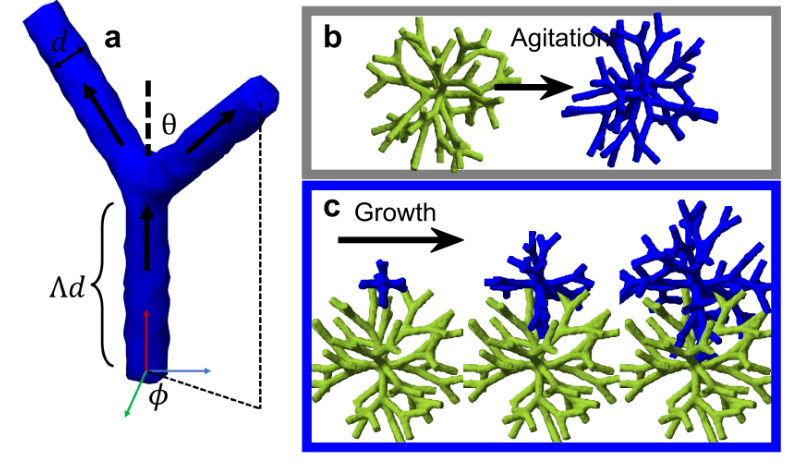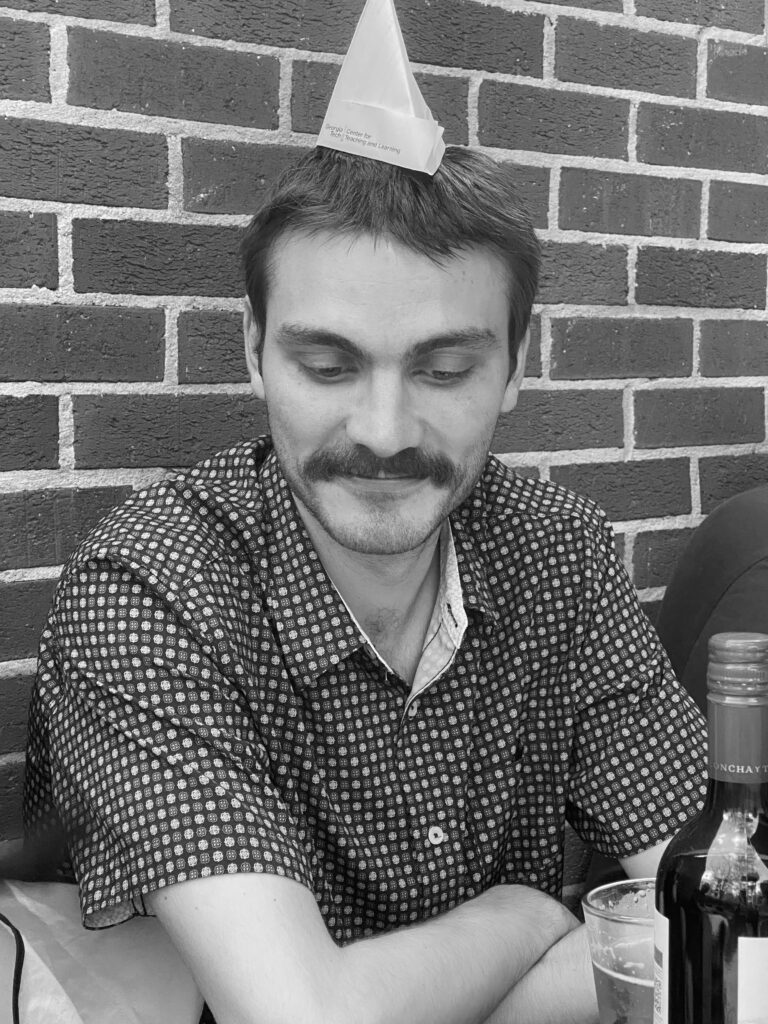We have a new paper in Physical Review X on Morphological Entanglement in Living Systems, first-authored by Dr. Thomas Day and in collaboration with friends in the Ratcliff Lab at Georgia Tech.
Many organisms exhibit branching morphologies that twist around each other and become entangled. Entanglement occurs when different objects interlock with each other, creating complex and often irreversible configurations. This physical phenomenon is well studied in nonliving materials, such as granular matter, polymers, and wires, where it has been shown that entanglement is highly sensitive to the geometry of the component parts.

However, entanglement is not yet well understood in living systems, despite its presence in many organisms. In fact, recent work has shown that entanglement can evolve rapidly and play a crucial role in the evolution of tough, macroscopic multicellular groups. Here, through a combination of experiments, simulations, and numerical analyses, we show that growth generically facilitates entanglement for a broad range of geometries. We find that experimentally grown entangled branches can be difficult or even impossible to disassemble through translation and rotation of rigid components, suggesting that there are many configurations of branches that growth can access that agitation cannot. We use simulations to show that branching trees readily grow into entangled configurations. In contrast to nongrowing entangled materials, these trees entangle for a broad range of branch geometries. We, thus, propose that entanglement via growth is largely insensitive to the geometry of branched trees but, instead, depends sensitively on timescales, ultimately achieving an entangled state once sufficient growth has occurred. We test this hypothesis in experiments with snowflake yeast, a model system of undifferentiated, branched multicellularity, showing that lengthening the time of growth leads to entanglement and that entanglement via growth can occur for a wide range of geometries. Taken together, our work demonstrates that entanglement is more readily achieved in living systems than in their nonliving counterparts, providing a widely accessible and powerful mechanism for the evolution of novel biological material properties.


